As much as I enjoy sci-fi epics, I’m also a huge sucker for a tauter brand of science fiction. Short stories are an ideal form for this genre: since sci-fi often revolves more around ideas than characters, it can be fun to just briefly wrap your head around a thoughtful concept without having to read a sprawling saga about it. Writers like Ray Bradbury (‘The Rocket Man’), Philip K. Dick (‘The Defenders’), and Isaac Asimov (‘Reason’) – not to mention Italo Calvino (‘World Memory’) and Jorge Luis Borges (‘Tlön, Uqbar, Orbis Tertius’) – elevated this type of tale to an art form, building entire worlds and exploring mind-blowing premises in only a handful of pages.
In comic books, sci-fi short stories have a very long tradition, with specialized anthologies ranging from the golden age of EC Comics to the British cyberpunk magazine 2000 AD. Some of the most talented writers and artists in the medium know how to use this space to full advantage, whether by giving readers glimpses of possible futures, by sketching out alternative societies, or by hinting at the ramifications of all kinds of speculative scenarios. In no more than ten pages, they can craft brief-yet-memorable reading experiences, usually culminating in a twist ending or an ironic punchline.
Here are 10 masterpieces everybody should read:
‘Judgment Day!’ (originally published in Weird Fantasy #18, cover-dated March-April 1953), by Bill Gaines, Al Feldstein (plot), Al Feldstein (script), Joe Orlando (art), Marie Severin (colors), Jim Wroten (letters)
This story has become mostly known for the dispute it caused between editor Bill Gaines and the censors at the Comics Code Authority. However, ‘Judgment Day!’ deserves to be just as well-remembered for what it is: a powerful example of socially aware sci-fi, using the futuristic robot planet of Cybrinia to denounce what was going on at home in the 1950s. It’s also praiseworthy for Joe Orlando’s meticulous rendition of intricate circuitry and bendy architecture. Marie Severin’s colors, with their shifts from shiny surfaces to rusty metal, help sell the poignant message.
‘50 Girls 50’ (originally published in Weird Science #20, cover-dated July-August 1953), by Bill Gaines, Al Feldstein (plot), Al Feldstein (script), Al Williamson (pencils), Al Williamson, Frank Frazetta, Roy Krenkel (inks), Marie Severin (colors), Jim Wroten (letters)
A dark tale of lust and greed about a man who manipulates women by thawing them out of deep-freeze suspended animation during a century-long space trip… and just when you think things couldn’t get more noir, ’50 Girls 50′ hits you with another disturbing twist! The typically gorgeous art by Al Williamson and Frank Frazetta creates an eerie contrast with the seedy tone.
‘…Conquers All!’ (originally published in Weird Fantasy #20, cover-dated July-August 1953), by Bill Gaines, Al Feldstein (plot), Al Feldstein (script), Jack Kamen (art), Marie Severin (colors), Jim Wroten (letters)
One more gem from the prolific partnership of Bill Gaines and Al Feldstein. This one is also a sexual tale, albeit much less cynical. Although there is something dated in the strict link between love and gender division, I have a soft spot for this quirky story of alien invaders from an ultra-technological race coming to grips with human emotions.
‘Secret of the Tick-Tock World!’ (originally published in Strange Adventures #109, cover-dated October 1959), by Gardner Fox (script), Carmine Infantino (art)
Because sci-fi can also be a springboard for pulpy adventure. Gardner Fox’s approach to the genre tends to be sunnier than the folks at EC, loosely using science as a gateway for enthralling escapades and wild vistas rather than provocative statements. Appropriately served by Carmine Infantino’s wholesome art, ‘Secret of the Tick-Tock World!’ is a charming, unpretentious tale that nevertheless touches on the classic sci-fi theme of how predetermined humanity’s destiny really is, after all…
‘A Martian Saga’ (originally published in Creepy #87, cover-dated March 1977), by Nicola Cuti (script), Bernie Wrightson (art)
More interplanetary adventure, this time in the form of a tongue-in-cheek poem about an astronaut stuck on Mars with only three days worth of oxygen, majestically illustrated by the master of gothic art, Bernie Wrightson.
‘Killing Time’ (originally published in Mystery in Space #114, cover-dated December 1980), by Gerry Conway (script), Tom Yeates (art), Jerry Serpe (colors), Gaspar Saladino (letters)
Sure, the old travelling-back-in-time-to-kill-Hitler premise has become a cliché (Ivar, Timewalker #2 had a lot of fun with this). And not just that: it betrays a simplistic reading of history as solely shaped by outstanding individuals, with little regard for structural forces. That said, it’s all in the way you tell the story – and in ‘Killing Time’ Gerry Conway and Tom Yeates manage to put a clever spin on it by playing with perspective, leading to a transcendent finale.
‘Love Doesn’t Last Forever’ (originally published in Epic Illustrated #34, cover-dated February 1986), by Alan Moore (script), Rick Veitch (art, colors)
A bitter extrapolation from 1980s’ anxieties and attitudes towards sex, with an Alan Moore touch. I guess the twist is meant to expose readers’ prejudices (hence the strategically placed word balloon early on), but the beauty of it is that ‘Love Doesn’t Last Forever’ works regardless of whether or not the ending feels like a revelation – it’s still a breathtaking example of sophisticated worldbuilding and characterization in just eight pages, each of them fabulously brought to life by Rick Veitch’s art and colors.
‘Secret Lords of the DNA!’ (originally published in Wasteland #7, cover-dated June 1988), by Del Close, John Ostrander (script), David Lloyd (art, colors), Steve Craddock (letters)
An absurdist satire about surrendering to determinism, blatantly written under the auspices of renewed Cold War tension, like much of DC’s output at the time. If nothing else, ‘Secret Lords of the DNA!’ would be worth reading just for David Llloyd’s trippy forays into surrealism.
‘The Osmotic Man’ (originally published in 2000 AD #605, cover-dated December 1988), by John Smith (script), Horacio Lalia (art), John Aldrich (letters)
A nightmarish slice of speculative fiction, ‘The Osmotic Man’ takes a sci-fi premise and runs with it until its logical conclusion, rendered with grit and precision by Horacio Lalia. Probably less an environmentalist parable than a sick fantasy prompted by too much British rainy weather.
‘Superidol’ (originally published in artbomb.net, in 2001-2002), by Warren Ellis (script), Colleen Doran (art)
This is the only story on the list to cross the ten-page limit (it’s has thirteen!), but I just couldn’t resist including Warren Ellis’ and Colleen Doran’s underrated webcomic about pop culture taking over society. A 21st century companion piece to Borges’ ‘The Zahir.’

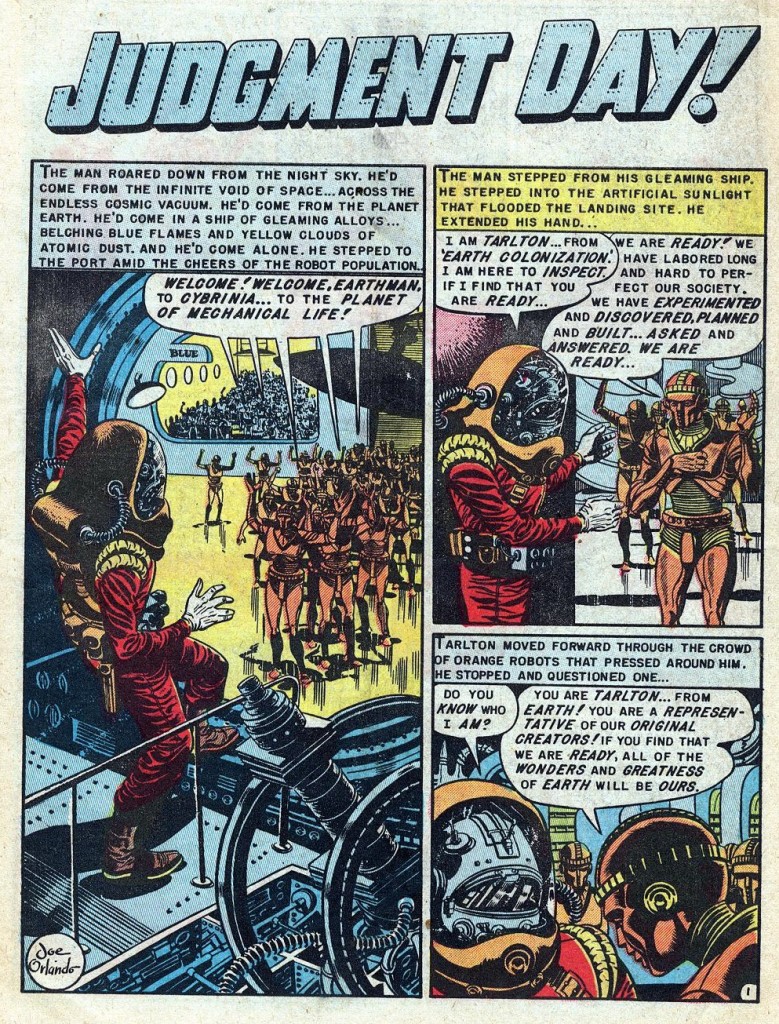
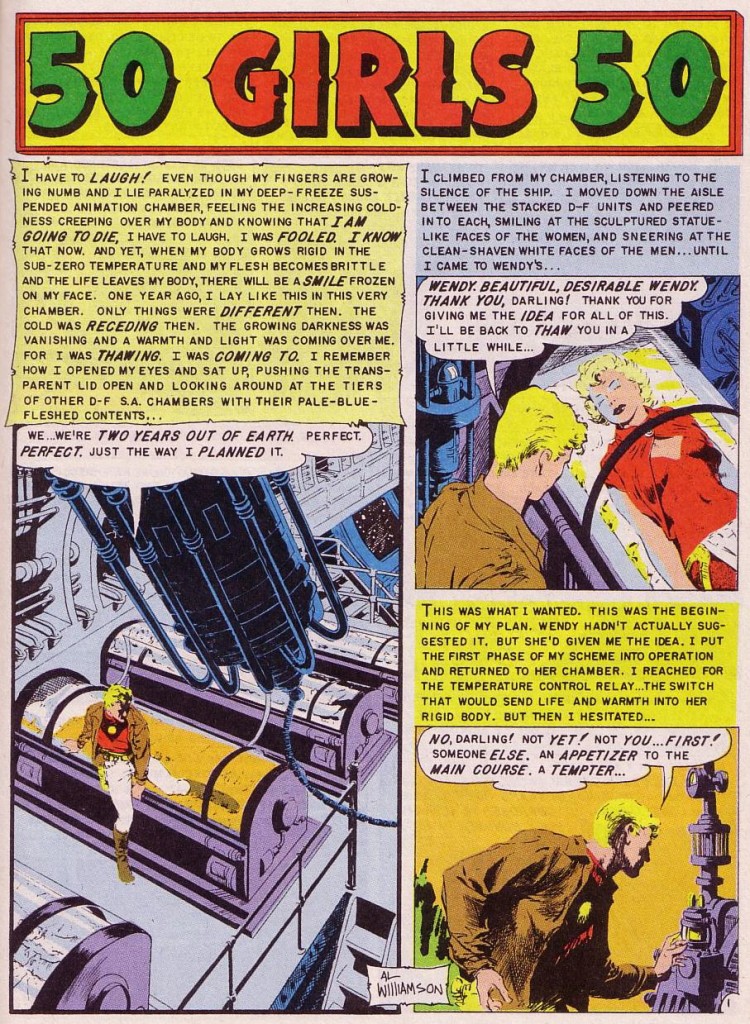
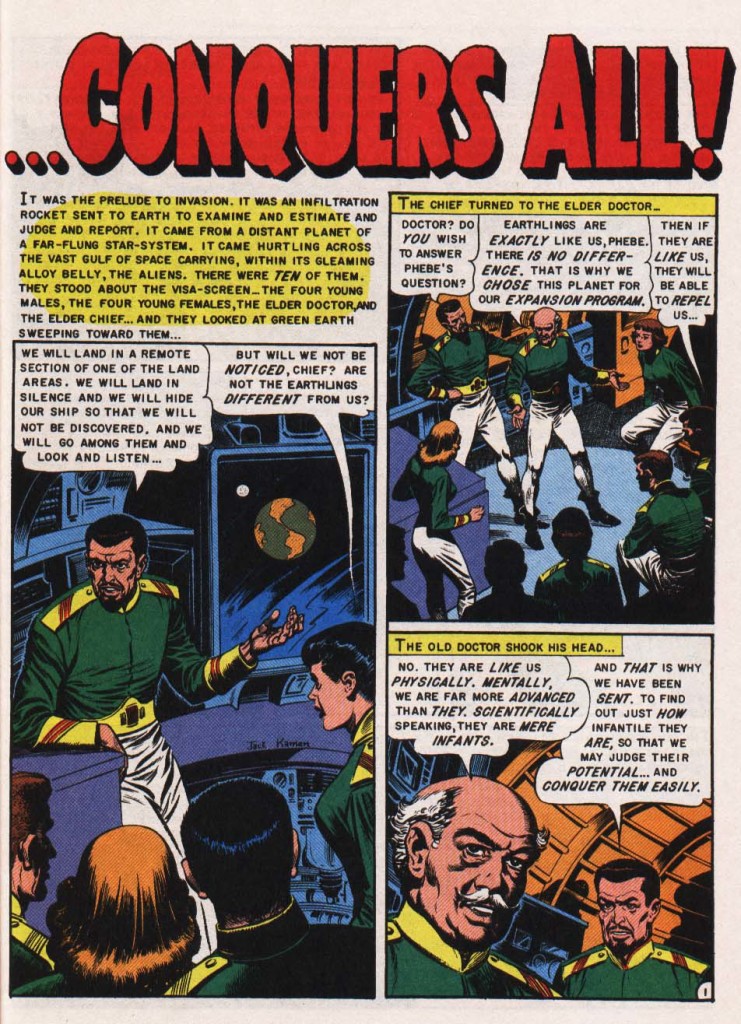
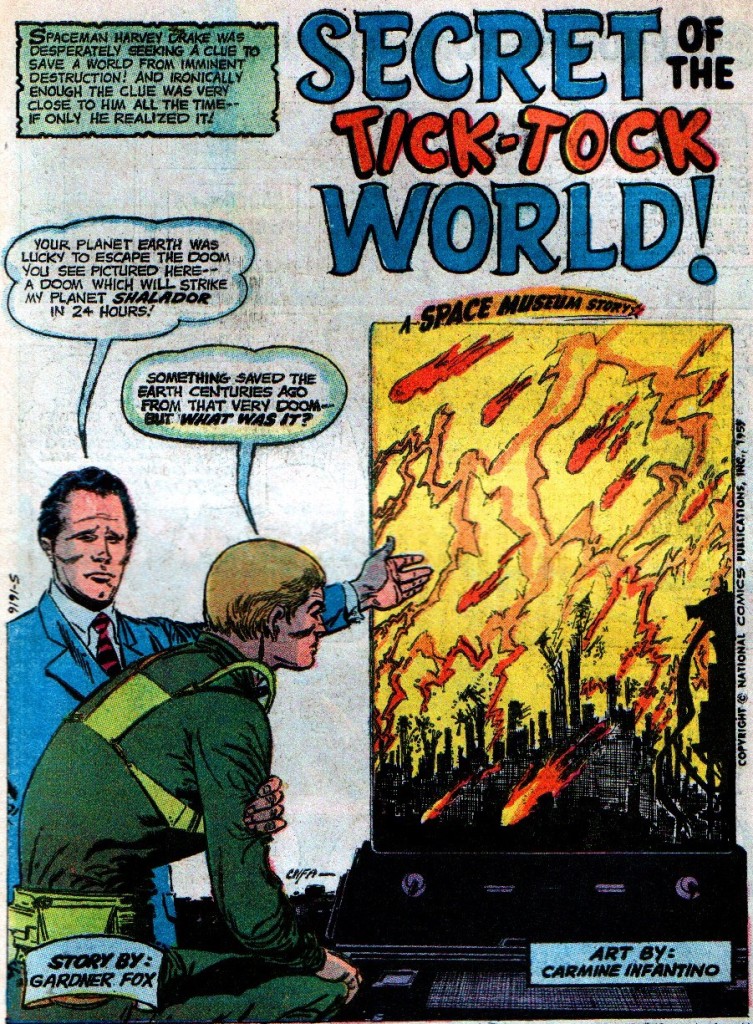
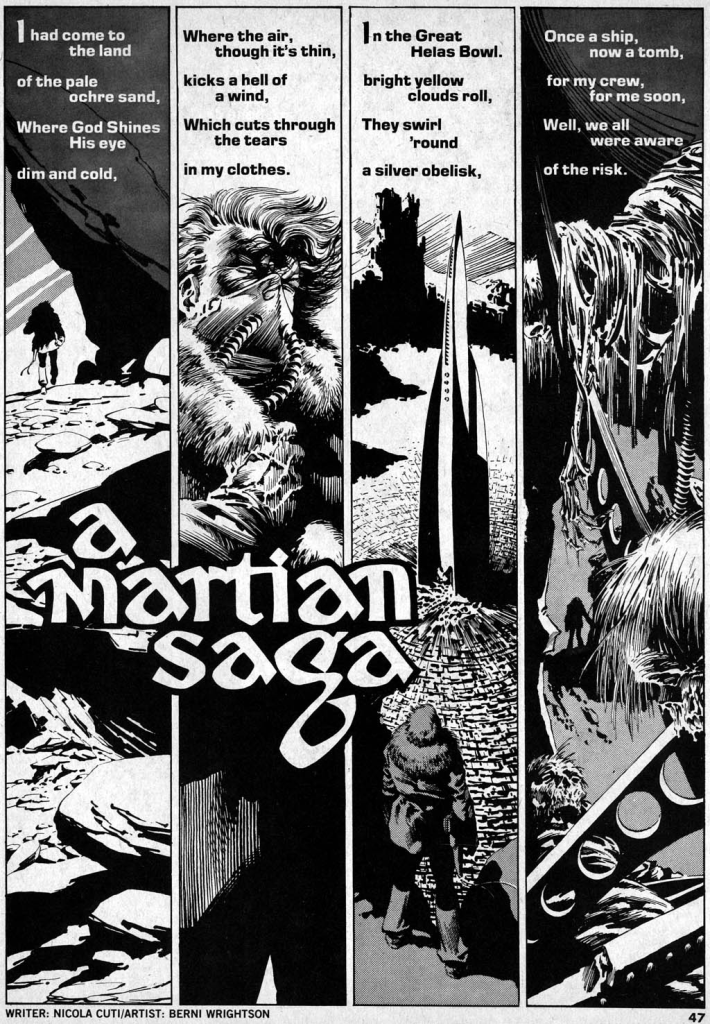
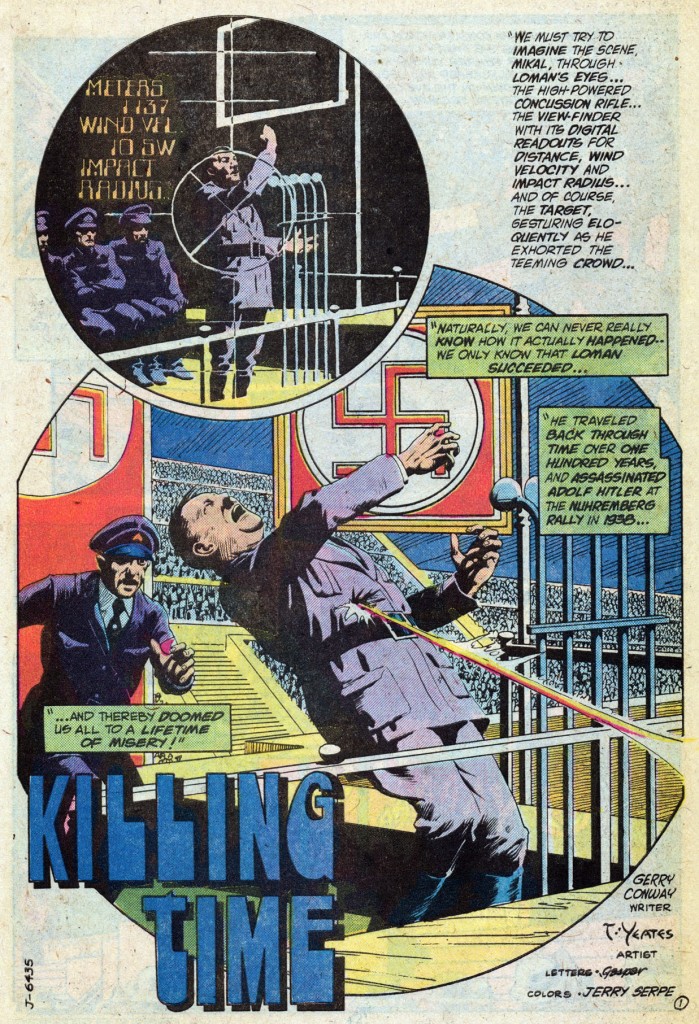
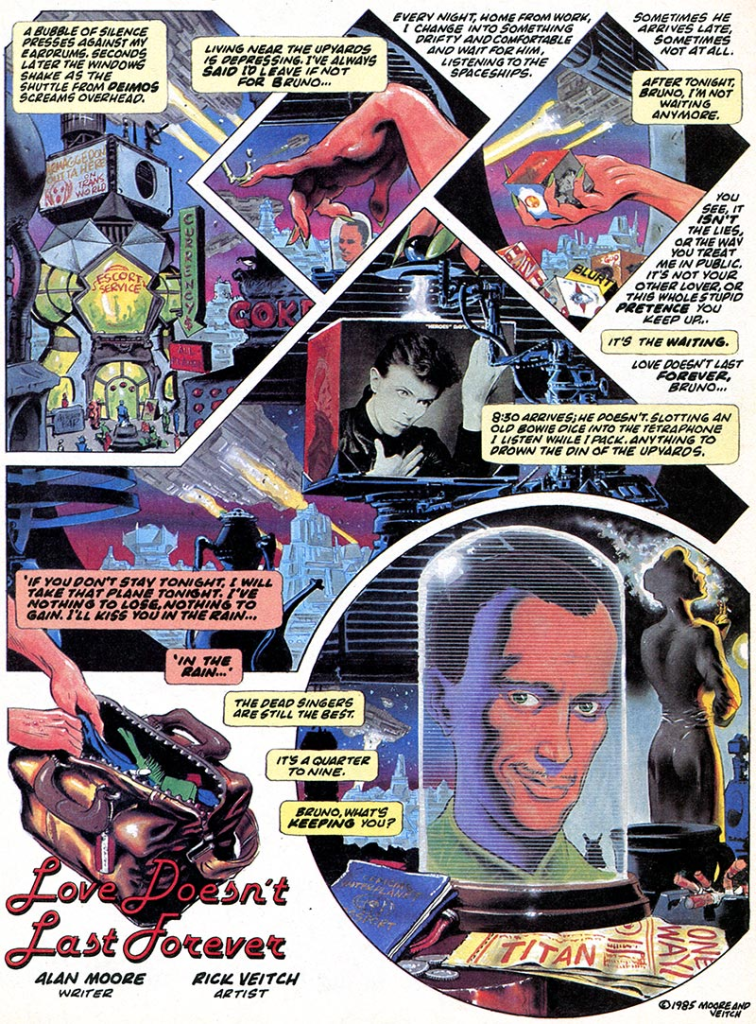
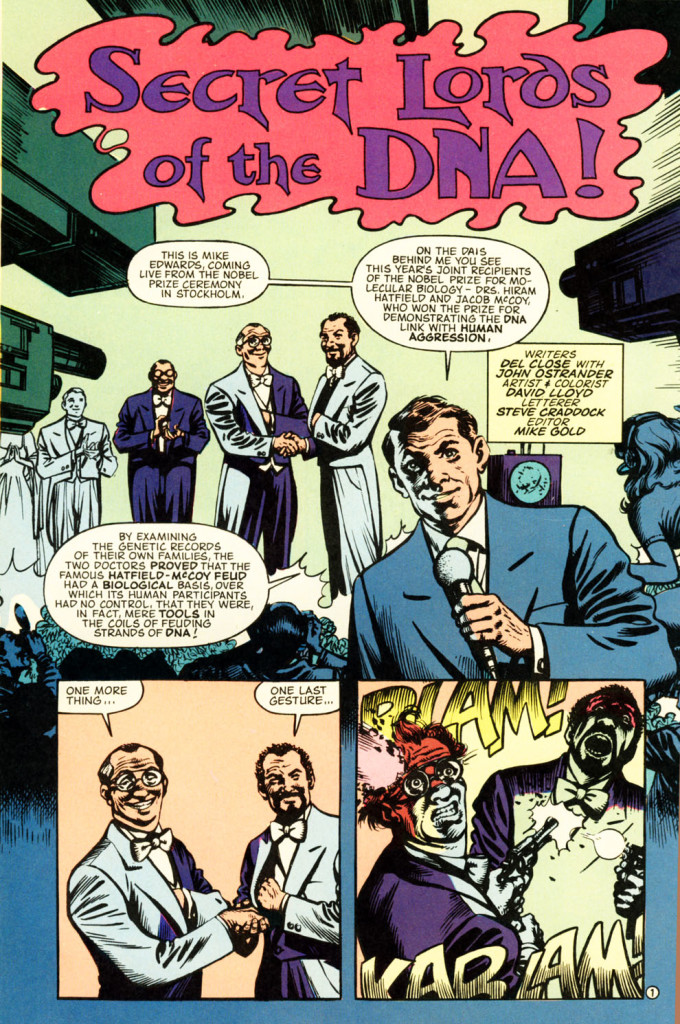
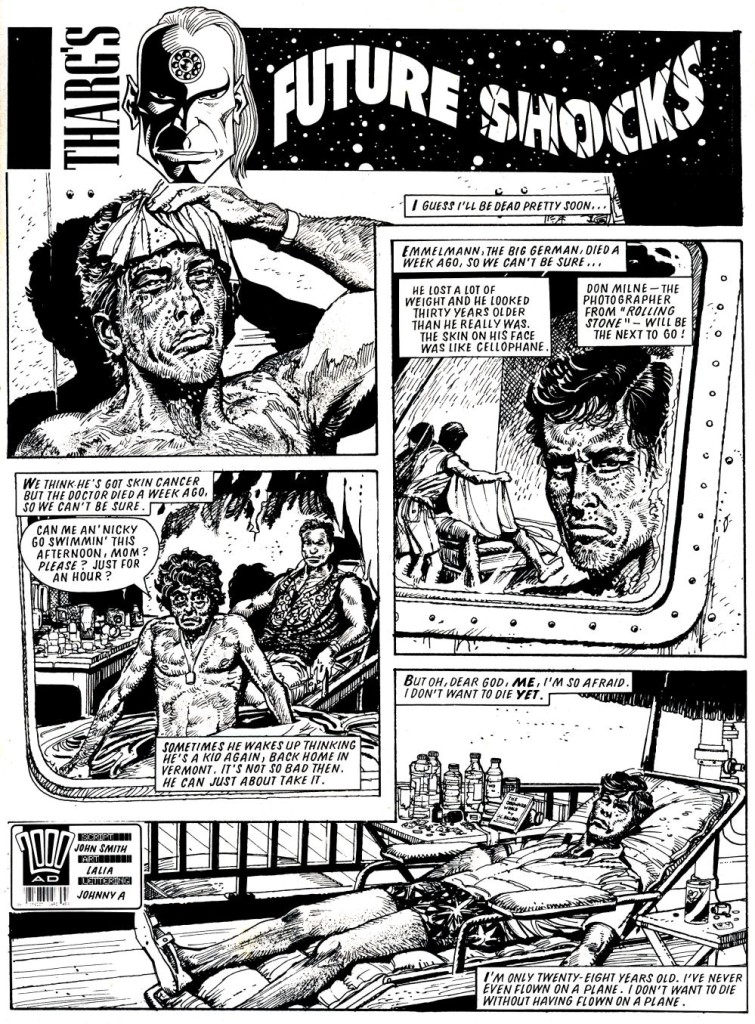
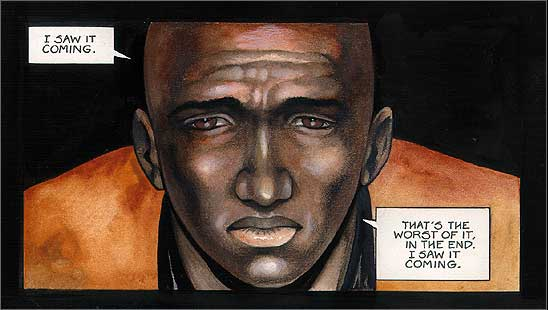
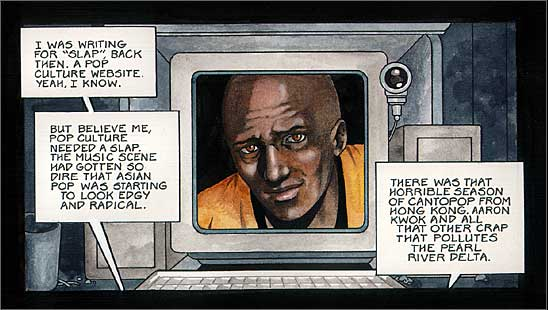
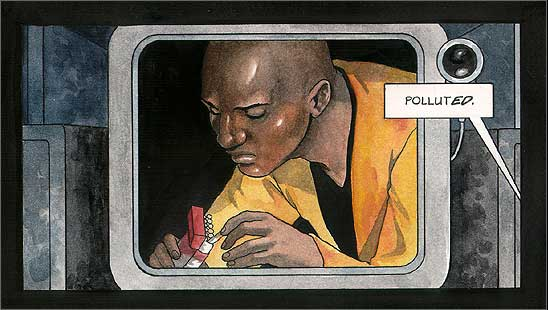
A while back I purchased all the original art pages for “Killing Time”. Finally decided to google the story and gotta say I really like it too (obviously). Has some flaws in the “plan” but packs some cool concepts into 7 pages and depicts it very well.
It sure does. In fact, more than the concept, I think it’s the depiction that truly elevates the whole thing… The layout in that final page is a high point of sci-fi comics.
The final page is my favorite as well, does a great job of illustrating the loop of actions if causes and the concept of no possible end. Here is a link to scans of the original art.
https://www.comicartfans.com/gallerydetailsearch.asp?artist=Thomas++Yeates&GCat=93278